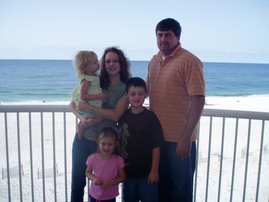
What Are Atoms by Lisa Trumbauer (32 pages; 1 book) #31
Trumbauer, Lisa (2004). What Are Atoms?. Danbury, CT: Children’s Press.
Awards: No awards given, but blog worthy.
Trumbauer, Lisa (2004). What Are Atoms?. Danbury, CT: Children’s Press.
Awards: No awards given, but blog worthy.
Grade Level: K-4 grades
Author Credibility: She is the author of over 200 children’s books. Many of those books are science related. She is a former editor of Scientific American Library Books and has edited several science programs for early learners. She has written numerous books on physical science.
Summary/Response: It begins by asking a question and getting children to extend their thinking. The first question asked is “What is the smallest thing you can imagine?” It gives a reasonable answer, ants, but then asks the children to think smaller. The book jumps in then about seeing things with a microscope and says that atoms are so small you can’t even see them with it. Atoms are what matter is made up of. Trumbauer has a table drawing of an atom and labels its parts. She explains how atoms make molecules and molecules make up elements and how elements join to form things like water. Molecules are used to make up solids, liquids, or gas. If a molecule is close together, it makes a solid. If it’s far apart, it makes a gas.
National Standards: Language: Students read a wide range of print and nonprint texts to build an understanding of texts, of themselves, and of the cultures of the United States and the world; to acquire new information; to respond to the needs and demands of society and the workplace; and for personal fulfillment. Among these texts are fiction and nonfiction, classic and contemporary works.
Science: Properties and changes of properties in matter, Motions and forces, Transfer of energy
Illustrations: Color photographs, drawing
Access Features: Index, About the Author, Photo Credits
Related Texts: What is Matter? by Don L. Curry, Solids, Liquids, and Gases by Ginger Garrett, What is Electricity? by Lisa Trumbauer
Classroom Use: I have found very few books on physical science and this is one I can use in my classroom to extend what it taught in the textbooks.

No comments:
Post a Comment